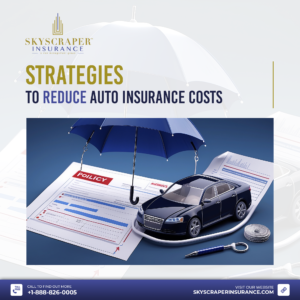The case involves an intoxicated teen driver, who got into an accident and injured a passenger.
The Connecticut Appellate Court recently affirmed a lower court’s judgment finding Liberty Insurance, Liberty Mutual and Safeco insurance companies had no duty to indemnify its policyholders under home, auto or an umbrella policy for an underlying crash-related personal injury action.
The policyholders, Theodore and Kim Johnson, sought coverage from the plaintiffs after their minor son Aaron Johnson left home with a friend in the middle of the night Dec. 26, 2019, in his father’s 1997 Audi A4 2.8 Quattro. Aaron Johnson lost control and struck a telephone pole, injuring his friend, Jordan Torres, according to the opinion written by Judge Hope C. Seeley.
Torres sued the Johnson family and others, alleging in part that earlier in the evening Aaron Johnson had consumed alcohol at a bar and at the Johnsons’ house in Glastonbury, “where he was visibly intoxicated and consumed more alcohol,” the opinion said.
The action also brought a claim of negligence against both Theodore and Kim Johnson, as well as an additional claim of vicarious liability against Theodore Johnson for allegedly allowing their son to consume or have access to alcohol — despite being underage — and then allegedly allowing him to leave and operate a car while intoxicated, Torres claims.
The Johnsons sought coverage under three policies of insurance: a homeowners policy issued by Liberty Insurance; an automobile policy issued by Safeco; and an umbrella insurance policy issued by Liberty Mutual.
The insurance companies sought a declaratory judgment, arguing that they were not obligated to defend or indemnify the Johnsons. The Johnsons countered that their alleged negligence arose from their conduct inside their home and that there was “no nexus between their alleged negligence and the operation of a motor vehicle,” according to the trial court’s order.
Hartford Superior Judge Charles P. Reed sided with the insurance companies as to all three policies.
Reed first noted that the Johnsons’ automobile policy that asserted coverage for bodily injury for the Audi had been canceled weeks before the accident, at the request of the Johnsons.
The homeowners’ policy “specifically excludes coverage for claims of bodily injury arising out of the ‘ownership, maintenance or use’ of a motor vehicle,’” as well as an exclusion for vicarious liability, Reed said.
As for the umbrella policy, the insurers argued that it “does not afford coverage against liability for bodily injury arising out of the use of a motor vehicle owned by any insured unless the liability is covered by an underlying policy.” Since there was not underlying coverage through either the homeowner or automobile policies, there was no coverage under the umbrella policy, Reed said.
The Johnsons appealed, arguing that the trial court improperly granted the plaintiffs’ summary judgment motion based on the motor vehicle exclusion in the homeowner policy.
The appellate panel disagreed, finding that the trial court correctly determined that the motor vehicle exclusion in the homeowner policy precludes coverage. With no coverage to an underlying policy, Liberty Mutual had no duty under an umbrella policy in the Torres matter, Seeley wrote.
The appellate court looked to the Connecticut Supreme Court’s 1975 decision in Hogle v. Hogle in which the court addressed the language and meaning behind “‘arise out of’ the ‘use’ of an automobile, explaining: ‘[I]t is generally understood that for liability for an accident or an injury to be said to ‘arise out of’ the ‘use’ of an automobile for the purpose of determining coverage under the appropriate provisions of a liability insurance policy, it is sufficient to show only that the accident or injury ‘was connected with,’ ‘had its origins in,’ ‘grew out of,’ ‘flowed from,’ or ‘was incident to’ the use of the automobile, in order to meet the requirement that there be a causal relationship between the accident or injury and the use of the automobile.”
In 2004, the Connecticut Appellate Court considered United Services Automobile Association v. Kaschel, which stemmed from a collision between motorcyclist Robert Choquette and an allegedly intoxicated driver, John T. Kelly. Following the crash, Kelly allegedly got out of his vehicle to check on Choquette’s status, but then left the scene without calling for help. In addition to suing for alleged negligence and reckless driving, Choquette alleged Kelly failed to render aid and assistance, exacerbating his injuries, according to the opinion.
In Kaschel, the panel noted that, in a declaratory judgment action, the trial court granted the plaintiff insurer’s motion for summary judgment with regard to Kelly’s alleged negligent and reckless operation of his vehicle, citing language ”virtually identical to the language of the motor vehicle exclusion in the present case.”
The trial court, however, had denied the motion for summary judgment as to leaving the scene without rendering assistance, as the court found that those actions “were independent of the events leading to the accident and Kelly’s use of his vehicle,” the opinion said regarding Kaschel.
However, the appellate court concluded that pursuant to Hogle, that the trial court “incorrectly determined those injuries did not arise out of Kelly’s use of his motor vehicle,” finding it was clear that any injuries Choquette allegedly sustained due to Kelly’s “failure to render aid to him arose out of Kelly’s use of his motor vehicle,” the opinion said.
The Johnsons attempted to distinguish their case from Hogle and Kaschel, claiming the trial court should not have relied on those cases as they “involved insureds whose alleged negligence was not separable from their use of a motor vehicle.” The defendants further claimed that the alleged negligence in those cases was “virtually contemporaneous with the operation of the motor vehicle” and occurred at or near where the accident took place.
The appellate panel disagreed, finding that neither timing nor geographical factors impacted the Hogle or Kaschel decisions, rather it was “the language of the exclusion in the insurance policy and whether the use of a motor vehicle was connected with the accident that caused the injuries,” in deciding whether the insurer had a duty to defend.
The appellate court said that the defendants have “misconstrued the language of the motor vehicle exclusion,” which excludes coverage “for bodily injury arising out of a motor vehicle; it does not exclude coverage for negligence arising out of the use of a motor vehicle.”
“Because [New London County Mutual Insurance v.] Nantes and [New London County Mutual Insurance v.] Bialobrodec provide further support for our resolution of this appeal, the defendants’ attempt to distinguish Kaschel and Hogle as a basis for asserting that the motor vehicle exclusion does not apply is unavailing,” Seeley wrote. “On the basis of our plenary review of the record in this case, including our comparison of the allegations of the complaint in the Torres action with the language of the homeowners policy and the motor vehicle exclusion contained therein, we conclude, as a matter of law, that the plaintiffs have no duty to defend the defendants in the Torres action.”
Judges José A. Suarez and Flemming L. Norcott Jr. concurred.
Kerry R. Callahan, a shareholder at Updike, Kelly & Spellacy in Hartford who represented the insurance companies, directed comment to Liberty Mutual.
Joseph M. Busher, a partner at Jackson O’Keefe in Wethersfield, represented the Johnsons.
Both Busher and Richard Angevine, a spokesman at Liberty Mutual, declined to comment.




